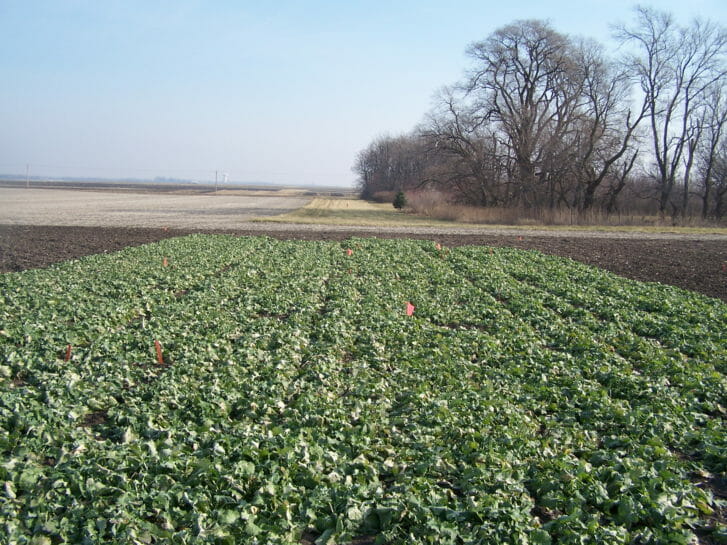RESEARCH REPORT: Winter Canola Used As Cover Crop In Iowa
Winter canola is a common oilseed crop grown in regions outside the Midwest. Due to its ability to overwinter, it may be a suitable candidate for use as a cover crop in Iowa crop production systems. Graduate student Rafael Martinez-Feria conducted experiments at the ISU Ag Engineering and Agronomy Research Farm near Ames to determine the optimal seeding date for winter canola to be used as a cover crop in Iowa. The full report has just been released on the Practical Farmers website: “Winter Canola Used As A Cover Crop In Iowa.”
Among the key findings:
- Winter canola seeded in early September produced the most growth and ground cover and accumulated the most N in the aboveground biomass in the fall.
- Winter canola successfully overwintered when seeded in early September and mid-September in the 2012-2013 Cycle only.
- Winter canola performance as a cover crop in terms of biomass production and N accumulation tended to decrease as seeding date was successively delayed.
Based on field measurements and historical weather observations from 1972-2011, Rafael estimated that canola planted by Aug. 31 in northern Iowa, by Sept. 4 in western and central Iowa, and by Sept. 12 in southeast Iowa will likely have sufficient time to establish and grow enough to maximize cover crop benefits and winter survival during at least half of the years in Iowa (see figure below). Therefore, seeding beyond these dates is not recommended. Nonetheless, early seeding may not completely eliminate the risk of winterkill if winter conditions are too extreme, as was the case in the 2013-2014 Cycle.
The full report can be accessed here.
This project was made possible by the Leopold Center for Sustainable Agriculture and the North Central Region Sustainable Agriculture Research and Education Program (NCR-SARE).
For more information about this study and other studies as part of PFI’s Cooperators’ Program, contact Stefan Gailans at stefan@practical farmers.org.


